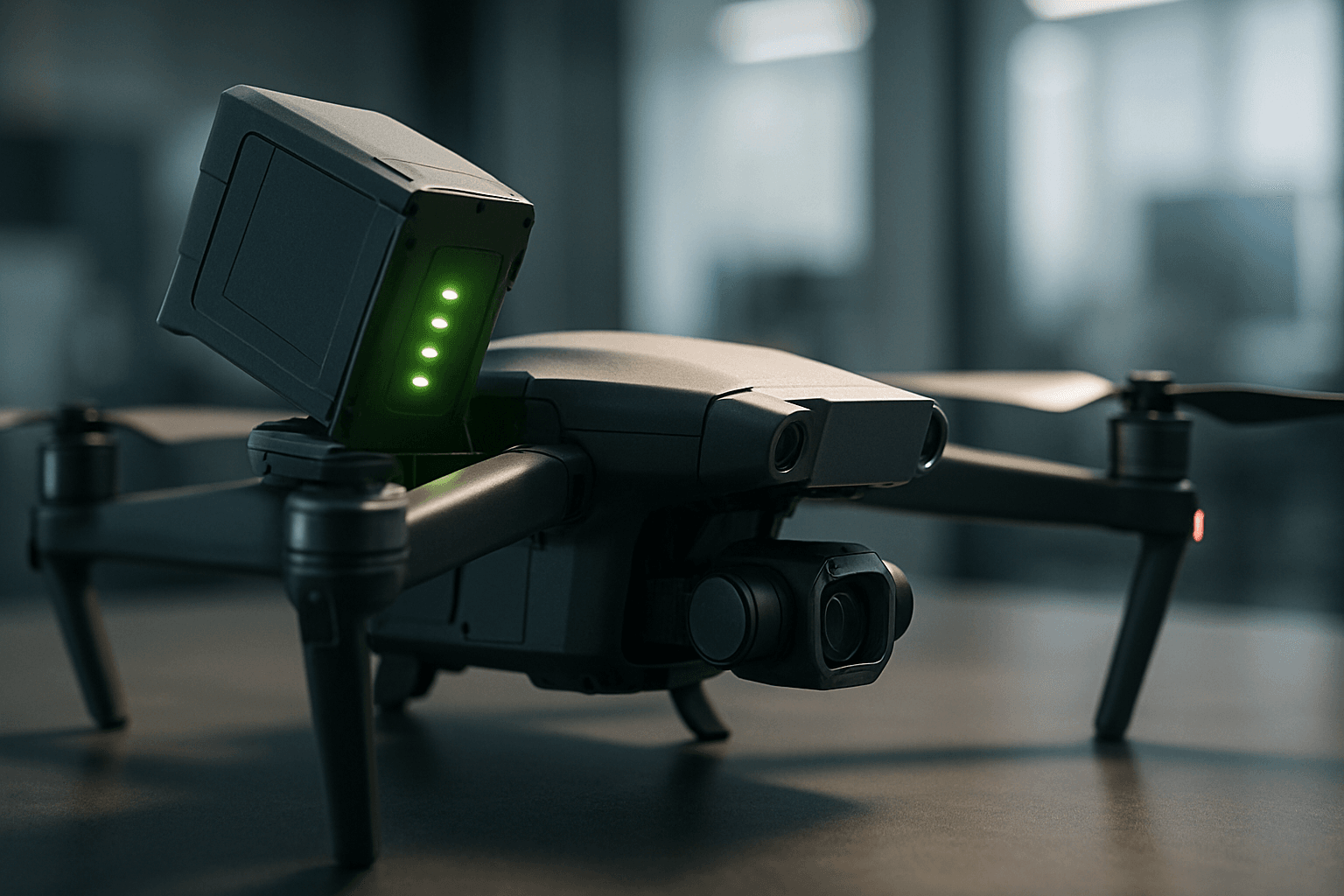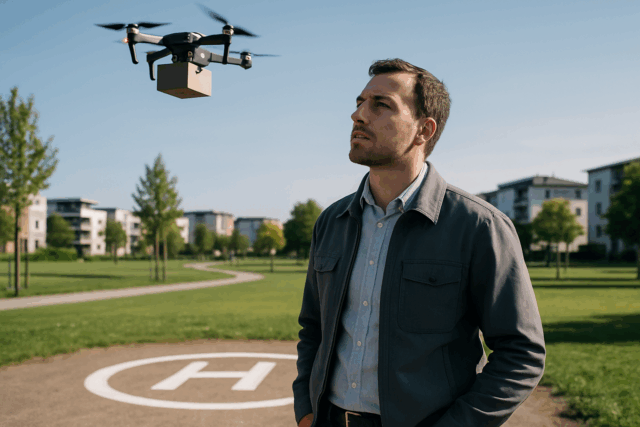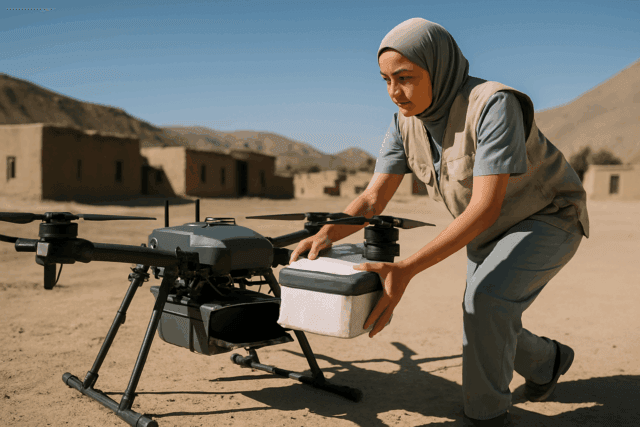Drone battery life is a crucial factor for any drone enthusiast or professional. Whether you’re capturing stunning aerial photography, conducting surveys, or simply enjoying the thrill of flight, understanding how to maximize your drone’s time in the air is essential. This comprehensive guide dives deep into the factors that affect drone battery life, offering practical tips and best practices to help you extend your flight times and keep your drone adventures soaring.
Understanding Drone Batteries
A drone’s performance is intricately linked to the type and quality of its battery. Understanding the function and unique characteristics of drone batteries is vital for maximizing flight times and ensuring safe operations.
Types of Drone Batteries
Several types of batteries are used in drones, each with its advantages and disadvantages:
- Lithium Polymer (LiPo): These are lightweight and have a high discharge rate, making them common for racing drones.
- Lithium-Ion (Li-Ion): Li-Ion batteries offer higher energy density and a longer lifespan, often used in commercial drones.
- Nickel-Metal Hydride (NiMH): More durable but heavier and have a lower energy density.
- Lead Acid: Less expensive but bulky, commonly used in larger drones.
- Silver-Zinc: This relatively new technology offers high energy density and has potential for growth.
Most modern drones use lithium polymer (LiPo) batteries because they are light and have a high energy efficiency. Lithium-ion (Li-ion) batteries offer higher energy densities but are typically heavier, making them less common in smaller consumer drones but more prevalent in industrial applications.
Battery Specifications and Ratings
Battery specifications and ratings are integral in understanding battery performance. Key metrics include:
- Capacity (mAh): Indicates the amount of current a battery can deliver over a specific timeframe. Higher capacity generally means longer flight time but also increases the battery’s weight. Batteries in the range of 10,000mAh to 30,000mAh are commonly used in professional and industrial drones to maximize flight duration.
- Voltage: Batteries with higher voltage tend to be more efficient and can provide more power to the motors.
- Discharge Rate (C Rating): Indicates the maximum current the battery can deliver. A higher C rating suits drones requiring high power output, such as racing drones or drones with powerful motors.
- Energy (Wh): Batteries are often rated in Watt-hours (Wh) which indicates the amount of energy stored in the battery.
Factors Affecting Drone Battery Life
Several factors can significantly impact a drone’s battery life. Understanding these elements can help you optimize your drone’s performance and extend its flight time.
Weight
The lighter your drone, the longer the battery life will be. Reducing your drone’s payload can help increase its flight time by reducing the amount of weight the drone has to carry. A drone with good battery life is typically lightweight, reducing power consumption and extending flight duration.
Environmental Conditions
Elements such as air density, temperature, wind speed, and even humidity can profoundly affect a drone’s performance. For instance, flying in high-altitude areas where the air is thinner can reduce lift, forcing drones to expend more energy to stay aloft, consequently shortening the flight time. Similarly, extreme temperatures can impact a drone’s battery efficiency.
Flying Style
How an operator handles a drone and their flight habits are significant factors that can impact flight time. Agile maneuvers, frequent changes in altitude or speed, and constant movement in different directions can all increase energy consumption, as they require more power from the drone’s propulsion system.
Battery Health
The actual capacity and health of the battery itself also matter. Battery degradation occurs with each charge cycle, gradually reducing the battery’s ability to hold a charge.
Number of Motors
FPV drone battery life depends on the number of motors and power consumption, with quadcopters typically offering longer flights than hexacopters.
Aerodynamic Drag
Air resistance and drag impede the drone’s movement, requiring more power to maintain flight.
Add-Ons
Adding accessories to your drone will make its flying time shorter.
How to Extend Drone Battery Life: Proven Tips
Maximizing your drone’s battery life requires a combination of best practices in flying, maintenance, and storage. Here are several proven tips to help you get the most out of your drone’s battery:
1. Reduce Weight
The lighter the drone, the less energy it needs to stay airborne. Remove any unnecessary attachments or reduce the payload to extend flight time. The heavier the drone, the more energy it must use to maintain flight, and the faster the battery will drain.
2. Fly in Ideal Weather Conditions
Wind, rain, extreme heat, and cold can all shorten your flight time. Stable weather lets the drone operate efficiently without draining the battery faster than necessary.
- Pre-warm batteries in cold weather (keep them in your pocket before flight).
- Avoid flying in temperatures below 0°C (32°F) or above 40°C (104°F).
- Monitor voltage drops—if the battery drains unusually fast, land immediately.
3. Fly Smoothly and Avoid Aggressive Maneuvers
Sudden climbs, sharp turns, and fast acceleration can quickly consume more power. Maintaining your drone at a stable altitude can help extend its battery life and increase its flight time because it reduces the amount of energy the drone uses.
4. Use Power-Saving Modes
Some drones come equipped with power-saving modes that can help extend battery life. Many drones have power-saving modes, such as reduced speed or limited camera usage, which can reduce the energy the drone uses during flight.
5. Monitor Battery Health Regularly
Check your battery’s condition in the drone’s app before and after flights. Track battery cycles, temperature, and voltage to detect potential issues early.
6. Proper Charging Practices
Charging techniques significantly impact the lifespan of a battery.
- Always use manufacturer-recommended chargers to prevent overcharging or undercharging. Avoid third-party chargers, which may cause inefficient charging or even damage the battery.
- Remove the battery once fully charged to prevent overheating and degradation.
- Avoid charging in extreme cold or heat, as temperature fluctuations can damage battery cells.
7. Optimal Storage Conditions
Proper storage is essential for maintaining battery health.
- For long-term storage, maintain a 50-60% charge level.
- Store in a cool, dry place. Excessive heat or moisture can degrade battery components.
- Avoid prolonged inactivity. If a battery remains unused for an extended period, charge and discharge it periodically to maintain optimal performance.
8. Avoid Full Discharges
Regularly draining a battery to 0% can shorten its lifespan. Try to land the drone before the battery level drops below 20%.
9. Regular Maintenance and Inspection
Routine battery checks can prevent unexpected failures.
- Swollen or damaged batteries should be replaced immediately.
- Clean terminals regularly. Dust and debris can interfere with connections, leading to inefficient power delivery.
10. Update Firmware
Keep your drone’s firmware up to date to ensure optimal performance and battery management.
Drone Battery Maintenance: Best Practices
Effective battery care and maintenance are imperative for ensuring longer flight times and optimal performance.
Charging Protocols
- Use Recommended Chargers: Always use the charger that came with your drone. Avoid third-party chargers, as they may not meet safety standards.
- Avoid Overcharging: Unplug the battery once it reaches full capacity to prevent heat buildup. Trickle charging can cause your battery to have a shorter lifespan and risks the battery overheating.
- Cool Down Before Charging: Wait for the battery to cool down before placing it back onto charge, especially after a flight.
- Charge at Room Temperature: Ensure batteries are charging in an area away from direct sunlight and in an environment close to room temperature. The ideal temperature range for charging is between 22 to 28°C.
Storage Guidelines
- Short-Term Storage: If you do not plan to use the battery in the next 1 to 10 days, store your batteries at around 60-80% capacity. Keep batteries at around 40-60% charge for short-term storage of around three to five days.
- Long-Term Storage: Batteries should be stored around 40-60% of total power before storing the battery. If storing for more than ten days, store the battery between 40 and 60% of its total power before storing it.
- Ideal Environment: Store batteries in a cool, dry place away from direct sunlight. The best temperature is between 22°C to 30°C.
- Avoid Extremes: Avoid extremes of heat or cold.
- Protective Storage: A DJI LiPo battery safe bag should be used to avoid any short-circuiting, dust, or any foreign particles hitting the terminals. Batteries can be stored in a fireproof bag or metal case to avoid issues.
- Remove from Drone: Never leave batteries plugged into the aircraft for a long period. Always remove the batteries from the drone during storage.
Maintenance Tips
- Regular Checks: Regularly check for signs of swelling or damage.
- Clean Contacts: Keep your battery contacts clean.
- Consistent Charging Schedule: Maintain a consistent charging schedule to prolong battery lifespan.
- Cycle Batteries: Charge and discharge the batteries to around 15% every 2-3 months to maintain good battery health.
- Ventilation: Ensure proper ventilation during charging.
- Discharge Before Storage: Drone technology expert’s advice discharging batteries to around 60% and leaving them in a suitable dry environment for storage. If you do not use the batteries for several days, discharge them to 50-60% before storage.
Troubleshooting Common Issues
- Swollen Battery: A swollen drone battery is a sign of gas buildup due to chemical degradation and is potentially dangerous. Common causes include overcharging or over-discharging, high-temperature exposure, physical damage, age, and manufacturing defects.
- Battery Voltage Difference Too Large: If there is a prompt saying “Battery voltage difference too large”, you may need to fully charge or discharge the battery.
Safety Tips for Battery Handling
- Manufacturer Instructions: Always follow manufacturer instructions.
- Supervision: Never leave batteries unattended and use a reputable charger. Charging and discharging are particularly dangerous processes and both should be done under observation.
- Fire Safety: Ensure that there are no flammable materials within five feet of the charging station to prevent fire.
- Smoke Detector and Fire Extinguisher: The storage facility should be cool, dry, and equipped with a functioning smoke detector and fire extinguisher.
- Safe Transportation: Transport your drone batteries in a protective, fire-resistant case. Ensure batteries are stored at a safe state of charge, typically around 30-50%, and prevent any contact between terminals to avoid short circuits.
What to Look for When Buying Drone Batteries
- Capacity: Look for a battery that offers a higher mAH to increase the potential flight time.
- Voltage: Select the voltage that matches the drone’s specifications.
- Discharge Rate (C Rating): A higher C rating is suitable for drones that require high power output.
- Brand and Quality: Batteries degrade with each cycle, gradually reducing their ability to hold a charge.
Drones with Longest Battery Life
- DJI Matrice 300 RTK: This enterprise-grade quadcopter holds the crown for flight time with a max of ~55 minutes per charge.
- AeroVironment Quantix: It is designed for endurance.
- DJI Matrice Series: Particularly the DJI Matrice 300 RTK, which offers up to 55 minutes of flight time on a single charge.
- JOUAV CW-30E: Which can reach up to 600 minutes.
- DJI Mavic 3 Series: The Mavic 3 and its variants (Classic, Pro) offer up to 46 minutes of flight in perfect settings.
Conclusion
Maximizing drone battery life is crucial for longer flights and improved performance. By understanding the factors that affect battery life and implementing the tips and best practices outlined in this guide, you can significantly extend your drone’s time in the air. Whether you’re a hobbyist or a professional, these strategies will help you get the most out of your drone batteries, ensuring safer, more efficient, and more enjoyable flying experiences.





